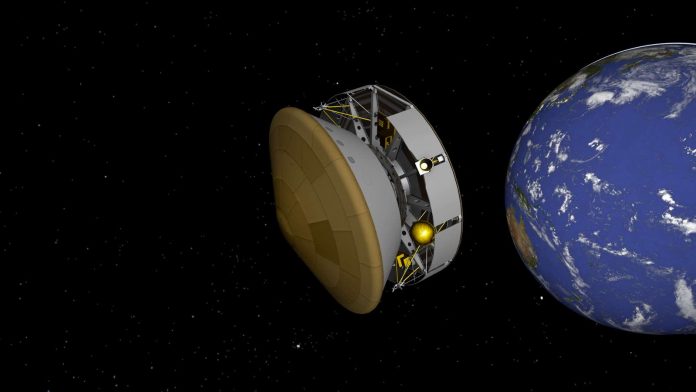The last time we saw NASA’s Mars 2020 Perseverance rover mission was on July 30, 2020, as it disappeared into the black of deep space on a trajectory for Mars. But with NASA’s Eyes on the Solar System, you can follow in real time as humanity’s most sophisticated rover – and the Ingenuity Mars Helicopter traveling with it – treks millions of miles over the next six months to Jezero Crater.
“Eyes on the Solar System visualizes the same trajectory data that the navigation team uses to plot Perseverance’s course to Mars,” said Fernando Abilleira, the Mars 2020 mission design and navigation manager at NASA’s Jet Propulsion Laboratory in Southern California. “If you want to follow along with us on our journey, that’s the place to be.”
“Eyes on the Solar System visualizes the same trajectory data that the navigation team uses to plot Perseverance’s course to Mars,” said Fernando Abilleira, the Mars 2020 mission design and navigation manager at NASA’s Jet Propulsion Laboratory in Southern California. “If you want to follow along with us on our journey, that’s the place to be.”
spacecraft in real time as it makes its way to Mars for a Feb. 18, 2021, landing. Credit: NASA/JPL-Caltech. Full image and caption ›
A crisply rendered web application can show you where the agency’s Mars 2020 mission is right now as it makes its way to the Red Planet for a Feb. 18, 2021, landing.
The last time we saw NASA’s Mars 2020 Perseverance rover mission was on July 30, 2020, as it disappeared into the black of deep space on a trajectory for Mars. But with NASA’s Eyes on the Solar System, you can follow in real time as humanity’s most sophisticated rover – and the Ingenuity Mars Helicopter traveling with it – treks millions of miles over the next six months to Jezero Crater.
“Eyes on the Solar System visualizes the same trajectory data that the navigation team uses to plot Perseverance’s course to Mars,” said Fernando Abilleira, the Mars 2020 mission design and navigation manager at NASA’s Jet Propulsion Laboratory in Southern California. “If you want to follow along with us on our journey, that’s the place to be.”
Eyes on Perseverance: Give the Mars 2020 Perseverance spacecraft a spin. Fully interactive, Eyes on the Solar System doesn’t just let you track it in real time as it travels to the Red Planet. Dozens of controls on pop-up menus allow you to customize not just what you see – from faraway to right “on board.”
Eyes doesn’t just let you see the distance between the Red Planet and the spacecraft at this very moment. You can also fly formation with Mars 2020 or check the relative velocity between Mars and Earth or, say, the dwarf planet Pluto.
“With all our orbital assets circling Mars as well as Curiosity and InSight on its surface, there is new data and imagery coming in all the time about the Red Planet,” said Jon Nelson, visualization technology and applications development supervisor at JPL. “Essentially, if you haven’t seen Mars lately through Eyes on the Solar System, you haven’t seen Mars.”
Dozens of controls on pop-up menus allow you to customize not just what you see – from faraway to right “on board” a spacecraft – but also how you see it: Choose the 3D mode, and all you need is a pair of red-cyan anaglyph glasses for a more immersive experience.
You don’t have to stop at Mars, either. You can travel throughout the solar system and even through time. The website not only uses real-time data and imagery from NASA’s fleet of spacecraft, it’s also populated with NASA data going back to 1950 and projected to 2050. Location, motion, and appearance are based on predicted and reconstructed mission data.















